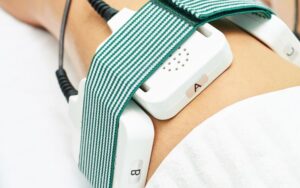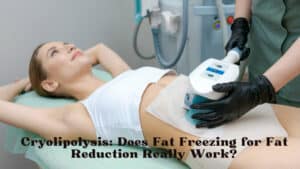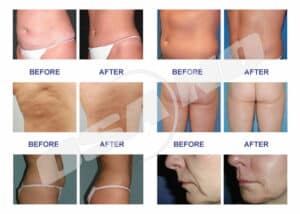
Cold laser therapy, also known as low-level laser therapy (LLLT), refers to the application of laser light at specific wavelengths,power, and energy density to achieve therapeutic benefits, including fat loss and body contouring. Unlike hot lasers used in medicine for cutting, burning, and ablating tissue, cold laser devices produce no sensation or increase in tissue temperature when applied to the body. Instead, thesenon-thermal or low-power lasers create photochemical and photophysical reactions at the cellular level to stimulate natural biological processes that can reduce fat.
Initially utilized to expedite recovery after liposuction surgery, it was later found that cold laser therapy independently contributed to overall fat loss in patients, leading to its adoption as a standalone treatment for fat reduction. Cold laser therapy is highly secure when administered by a skilled and certified healthcare professional. It has undergone clinical trials for various applications, serving as a complementary or alternative therapy. With its non-intrusive nature, there’s no need for additional preparation or medications, offering a convenient solution for those seeking effective and safe fat loss treatments.
Let’s explore the science and benefits of cold laser therapy for optimal results in your fat reduction journey.
How Cold Laser Therapy Works for Fat and Weight Reduction

- The laser light delivers photonic energy that interacts with fat cells (adipocytes) and stimulates cellular metabolism and mitochondria activity. This enhances lipolysis – the breakdown of stored triglycerides into free fatty acids and glycerol that can then leave the cell.
- The treatment induces pores or openings in the fat cell membrane to encourage the fat cells to release lipids or fatty acids into the interstitial space. From there the lymphatic system removes the emulsified fat.
- In addition to fat release through lipolysis, laser irradiation can lead to fat cell apoptosis (programmed cell death) and decreased formation of new fat cells (adipogenesis).
- The laser parameters such as wavelength, fluence, and duration can be optimized to enhance the fat reduction response. Typically wavelengths of 532nm is used.
Benefits of Cold Laser Therapy for Weight Reduction
Cold laser therapy is a non-invasive treatment that helps in the reduction of body fat. When applied to the problem areas, the therapy involves emitting low levels of light directly into the body’s cells, which triggers several biological processes.
Photobiomodulation, the primary mechanism, involves the light energy from the laser interacting with fat cells, causing lipid membranes to become more permeable temporarily. Consequently, fat stored in the cells, in the form of triglycerides, is released into the interstitial space and then absorbed and processed by the body’s lymphatic system.
Metabolic Enhancement is another effect induced by cold laser therapy. It can promote an increase in cellular metabolism, enhancing the body’s ability to process the released fats and use them asenergy. The process does not destroy fat cells but instead helps to empty their contents, which can potentially lead to a reduction in the size of the treated area.
In summarized form, the benefits of using cold laser for losing body weight include:
- Being a non-invasive procedure that lyses excess fat without damaging other tissues
- Targeting small treatment areas for spot fat reduction
- Reducing waist circumference, body fat percentage, body mass index (BMI), and visceral fat volume
- Triggering the release of triglycerides from fat cells and enhancing lipolysis and fat breakdown
- Contouring the body by shrinking fat cells rather than completely killing or removing them
- Preserving fat cells important for metabolic health.
It is critical to note that cold laser therapy should act as a complement to a healthy lifestyle, not as a standalone solution. It is intended to support diet and exercise in achieving weight loss goals. Proper clinical evaluation and supervision are also necessary to ensure safety and effectiveness.
Comparison to Other Fat Reduction Procedures
Cold laser fat removal has some unique advantages over other non-invasive fat reduction techniques:
Comparison to cryolipolysis (CoolSculpting)
- Cold lasers do not require tissue cooling or freezing as CoolSculpting does. So, there is no need for specialized cooling applicators or extended cold exposure.
- Cold laser treatments are typically quicker with no attachment of applicators for an hour or more. This allows for more targeted spot reduction.
- Cold lasers can be used on both pinchable fat and smaller non-pinchable areas. CoolSculpting works better on pinchable fat deposits.
- There is no post-treatment massage required after cold laser therapy. CoolSculpting often requires massage of the area treated.
- Cold lasers can cause some temporary redness or tingling sensation. CoolSculpting has more reports of discomfort, numbness, swelling, and bruising from the extended cooling.
Comparison to radiofrequency (truSculpt, Vanquish)
- Cold lasers are non-thermal, so no tissue heating is required, while radiofrequency heat tissue to destroy fat cells. This makes cold lasers safer with less risk of burns or discomfort.
- Radiofrequency can cause pain, swelling, and bruising from the heating, which cold laser does not. So cold laser has a gentler side effect profile.
- Radiofrequency better achieves skin tightening while showing solid but less dramatic fat loss compared to cryolipolysis. Cold lasers have good clinical fat loss data.
- Radiofrequency treatments like Vanquish take about 30-60 minutes per session, closer to the 20-30 minute cold laser sessions. Both require multiple treatments.
Patient Selection and Treatment Protocol
Is cold laser therapy right for you? Determining the right cold laser therapy candidates and developing an effective treatment plan is key for successful fat reduction and body contouring outcomes.
Best candidate criteria
When considering cold laser therapy as a weight loss option, health professionals assess a range of factors to determine a patient’s suitability. The criteria include:
- Age: Patients typically should be 18 years or older.
- Body Mass Index (BMI): Ideal candidates have a BMI over 30 or between 25-30 with weight-related health conditions.
- Health Status: Patients must be in stable health without conditions contraindicated by laser therapy, such as:
- Cancer
- Pregnancy
- Epilepsy
- Pacemaker presence
Patients should also have realistic expectations and a commitment to maintaining a healthy lifestyle post-treatment. Those seeking substantial weight reduction may require additional or alternative treatments.
It is critical to note that cold laser therapy is intended as a complement to, not a replacement for, diet and exercise.
Previous Medical Interventions:
- No recent surgeries in the treatment area within 6 months.
- Lack of severe skin disorders in the target area.
Typical treatment plan
Standard recommended laser protocols:
- 12-24 sessions over 6-12 weeks
- 3 sessions per week
- 20-30 minutes per session
- 630-640nm wavelength
- Laser pad, cluster probe, or focused handpiece
Target areas:
- Abdomen
- Flanks (love handles)
- Inner/outer thighs
- Upper arms
- Chin and neck
Maintenance treatments and long-term results
- Schedule follow-up treatments every 3-6 months
- Improved results with ongoing laser sessions
- Permanent fat loss requires lifestyle changes
- Combine with eating healthy and exercise
The Future of Cold Laser Therapy for Fat Loss

The exploration of cold laser therapy as a tool for weight loss is an evolving field. Studies thus far provide a foundation for future research to build, aiming to answer lingering questions and better understand the mechanisms behind the therapy.
- Efficacy and Mechanisms: Further research is needed to clarify the degree to which cold laser therapy is effective for weight loss. Investigations should focus on:
- Long-term weight loss sustainability.
- Biological mechanisms activated by cold laser therapy.
- Optimization of Parameters: The determination of optimal treatment parameters is crucial. Future research should address:
- The frequency and duration of treatments.
- Specific wavelengths and their effects on fat tissue.
- Safety and Side Effects: While cold laser therapy is considered safe, there is scope for more extensive safety profiling:
- Systematic analysis of potential long-term side effects.
- Identification of contraindications for certain populations.
- Comparison Studies: Comparative analyses are essential for situating cold laser therapy within the weight loss treatment spectrum:
- Head-to-head trials with other non-invasive procedures.
- Synergistic effects when combined with lifestyle changes or other treatments.
- Patient Selection: Identifying which population stands to benefit the most:
- Effectiveness based on different BMI categories.
- Responsiveness to the therapy based on individual metabolic rates.
The scientific community anticipates that ongoing and future investigations will yield substantive evidence, paving the way for more informed clinical applications of cold laser therapy for weight loss.






